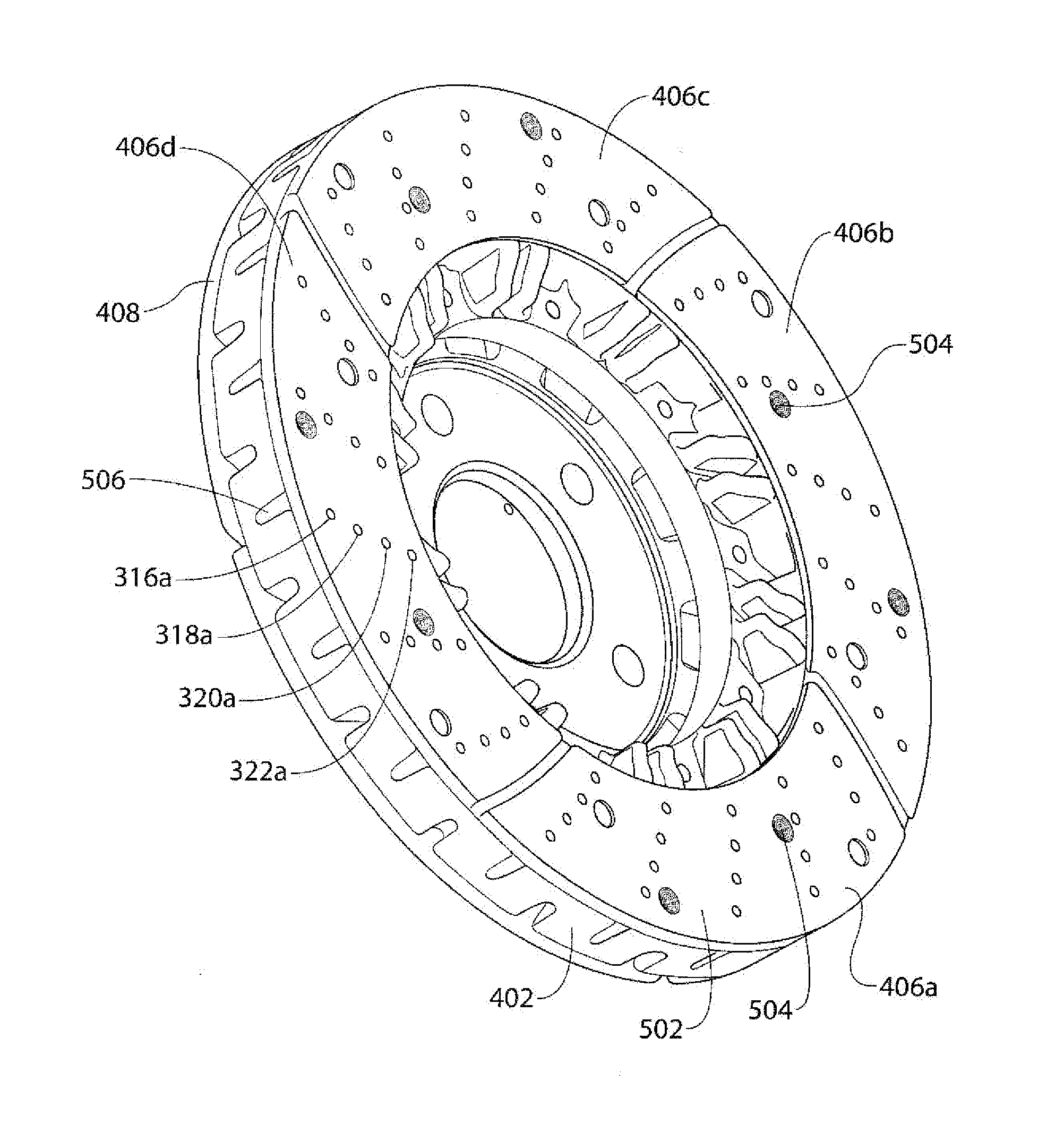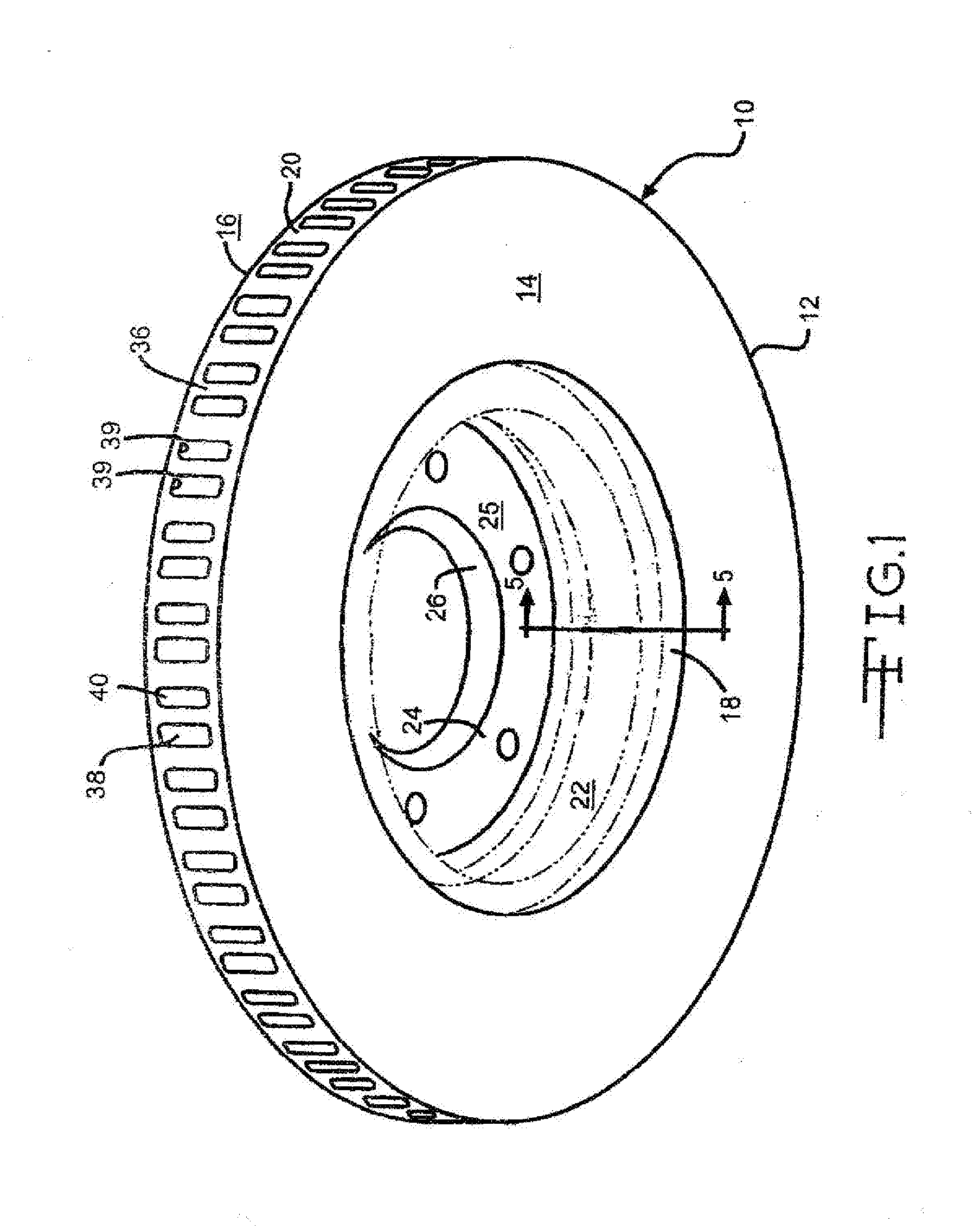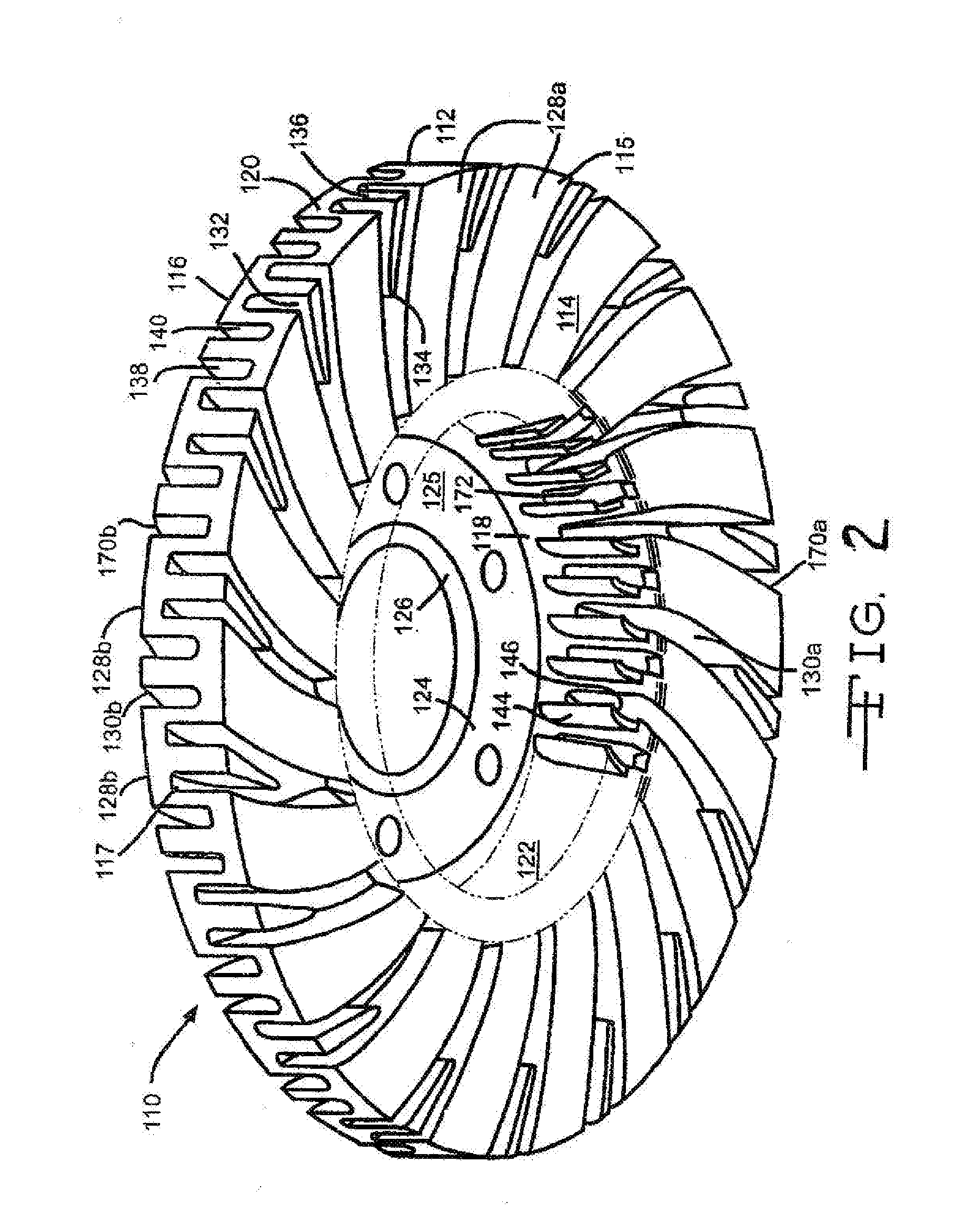Segmented brake rotor with externally vented carrier
a segmented brake rotor and carrier technology, applied in the direction of brake types, brake linings, braking elements, etc., can solve the problems of inability to operate at as high temperature, aluminum is much lighter, and the weight of the sbr is relatively high, so as to improve the function and effectiveness of the segmented brake rotor, improve the efficiency of the sbr, and improve the effect of radiation and conductive heat dissipation
- Summary
- Abstract
- Description
- Claims
- Application Information
AI Technical Summary
Benefits of technology
Problems solved by technology
Method used
Image
Examples
Embodiment Construction
[0025]The invention is an extension of U.S. Pat. No. 6,536,564 for an externally vented brake rotor (EVR). The EVR core design is being used to improve the function and effectiveness of a segmented brake rotor (SBR) through more efficient management of the thermal forces created in the segmented rotor. A common deficiency exists in segmented rotors in the absorption and dissipation of the heat created on the braking friction surfaces. The novel design on the EVR, when applied to the segmented rotor carrier platform, results in improved convection, radiation and conductive heat dissipation, greater surface area, increased volume and velocity of air flow through and around the rotor friction area and increased transfer of heat from the friction plates to the lightweight rotor carrier platform for dissipation.
[0026]The invention contemplates an alloy, alloy composite or ultra light composite(common aluminum compounds, MMC, high strength aluminum polymer, carbon fiber, etc.) based EVR, ...
PUM
 Login to View More
Login to View More Abstract
Description
Claims
Application Information
 Login to View More
Login to View More - R&D
- Intellectual Property
- Life Sciences
- Materials
- Tech Scout
- Unparalleled Data Quality
- Higher Quality Content
- 60% Fewer Hallucinations
Browse by: Latest US Patents, China's latest patents, Technical Efficacy Thesaurus, Application Domain, Technology Topic, Popular Technical Reports.
© 2025 PatSnap. All rights reserved.Legal|Privacy policy|Modern Slavery Act Transparency Statement|Sitemap|About US| Contact US: help@patsnap.com



